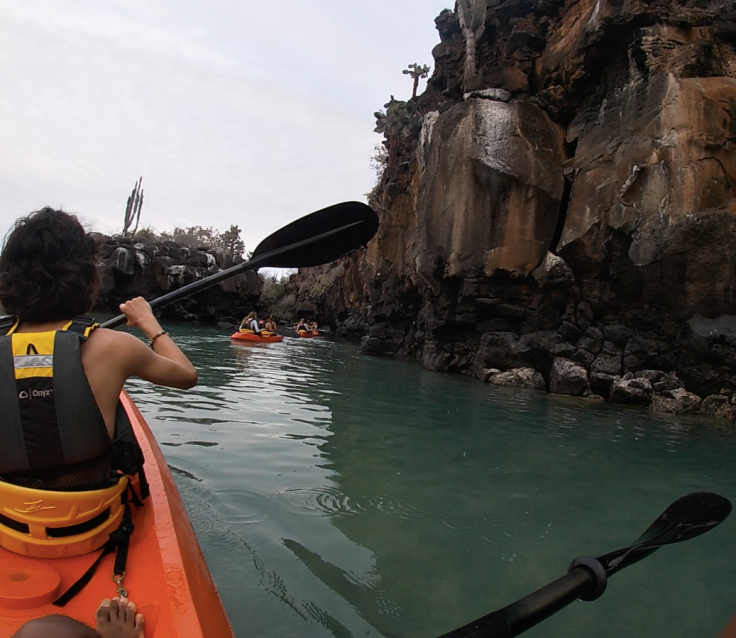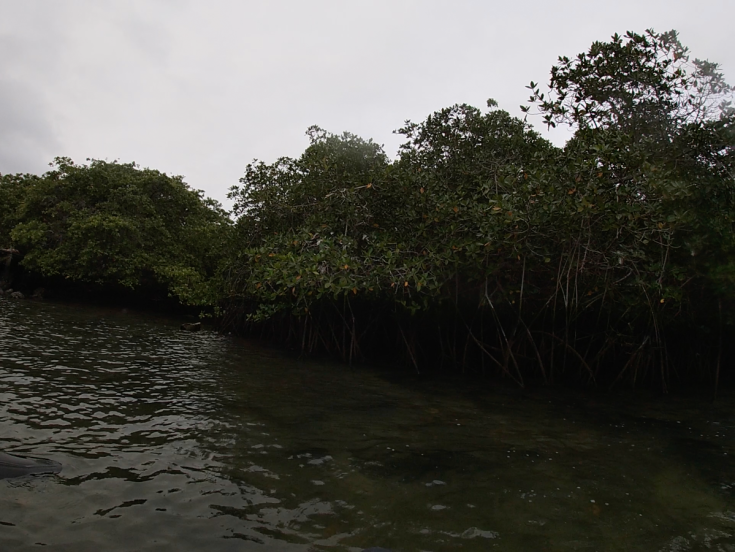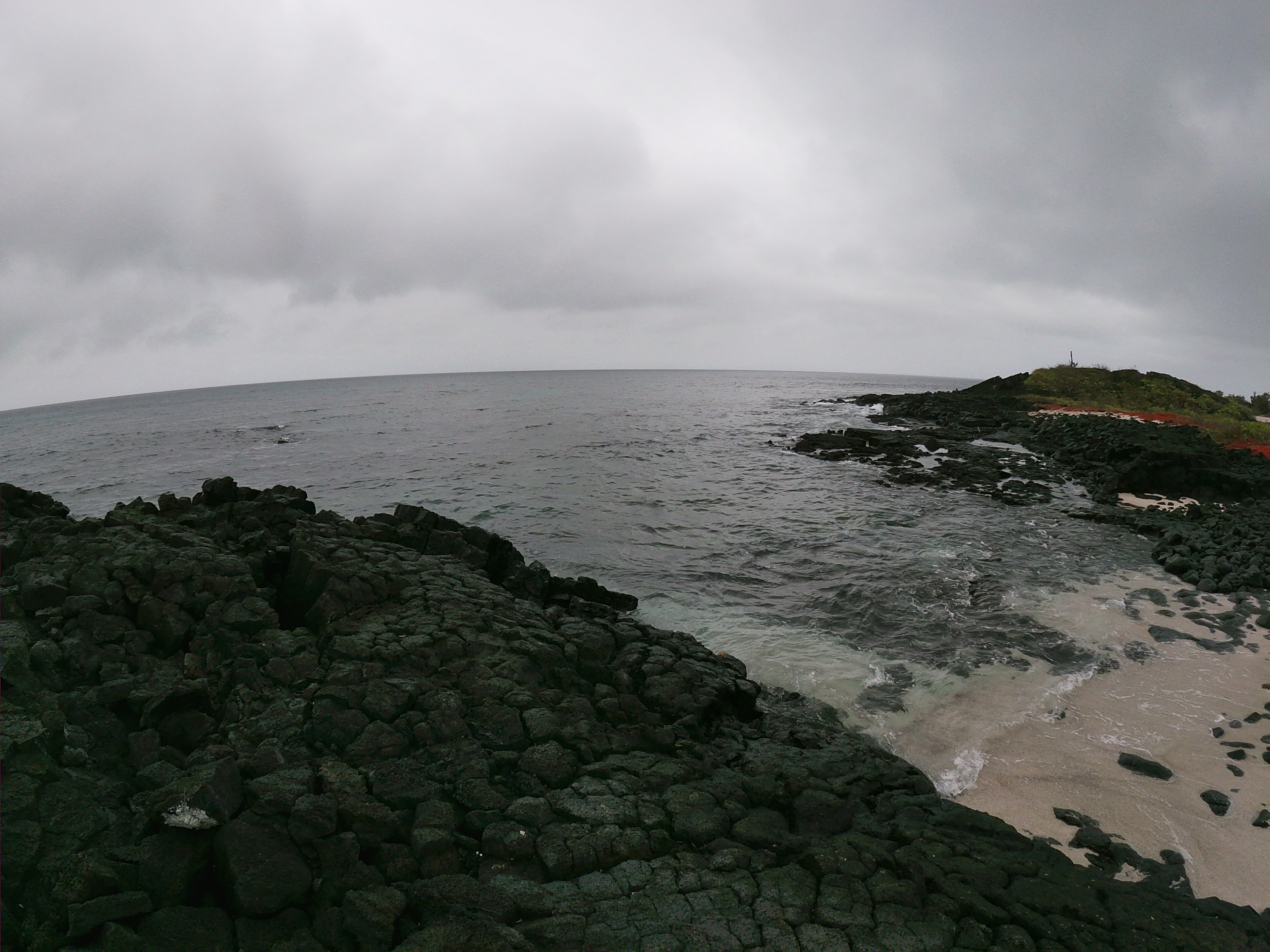If you wanna just skip the story and check out some photos, head over here. But really you should read the story.
Once upon a time, I visited Ecuador through a program I was working for called Semester At Sea. More specifically though, I went to the Galápagos Islands for three days with a group I was traveling with, and it was everything I thought it’d be! I was always into science growing up, so being able to visit the legendary islands where Charles Darwin crafted his theory of evolution was a dream come true. I can confirm that there are, in fact, lots of tortoises, birds, sea lions, iguanas, and crabs. The Galápagos is made up of 13 major islands and a number of smaller ones, but I spent most of my time on 2 in particular: Santa Cruz and Floreana.
Aside from the history and science and whatnot, the islands are beautiful and the community is really unique. We started off on Santa Cruz island, which houses one of the main tourism towns in the Galápagos: Puerto Ayora. Our first stop here was Manzanillo Farm and El Chato Ranch in the highlands, where we came across our first Giant Tortoises and lava tunnels. These tortoises were HUGE. I had to ask our guide why they get so big compared to other tortoises, and the answer lies in a concept called island gigantism. Basically, since these tortoises have no real competitors or predators, they are able to feed and grow much larger than their mainland cousins. You ever see the live action Ninja Turtles movies? Similar size.
After a quick lunch, we made our way to the surrounding bay for a tandem kayaking tour. Did we see any tortoises while kayaking? Nope, they don’t like water like that. But we did see sea lions, crabs, and a few famous bird species, including the fan-favorite blue-footed boobies. And of course a shark circled around my kayak. No big deal. Mere bag of shells. Seriously, though, that happened, but it was a little shark–nothing that was gonna eat us. We had fun.
So that was all day 1. Day 2 was all about Floreana, which we had to take a speedboat to get to. That alone was actually pretty fun, unless you’re especially prone to motion sickness–it’s sort of a long, bumpy trip. Once we got there though, we were immediately greeted by iguanas, sea lions, and crabs at the dock.
After taking a few minutes to get some photos with the animals, we made our way to La Lobería, which is this really cool and quiet beach on the western coast of Floreana with some walking trails that go around the shore. It started to rain a little bit, but it was amazing to see the animals and plants of the area. After a quick pause for some swimming and exploring, we left for a hike in the Scalesia Forest in the highlands of Floreana. While on the hike, we saw more Galápagos tortoises, plant-life, stone carvings, and an old abandoned pirates’ cave. The top of the forest provided an overview of much of the island. Paused for some photos, then back down we went! We made our way back to the dock so we could catch a boat back to Santa Cruz. To cap off the day, we went to this really cool restaurant for a partly outdoor dinner.
Our last day was more like a half day spent at the Charles Darwin Research Station. The facility is home to a number of cool exhibits, but my favorite was the Breeding and Rearing Center for young tortoises. A whole lotta baby tortoises! The adult Galápagos tortoises don’t have any predators, but they’re vulnerable to certain bird species when they’re young, so the research station instituted this program as a means to protect them and ensure their survival until they can safely be released. Oh, and I didn’t mention this yet, but these animals can live well over a hundred years!
It’s only appropriate that the last piece I talk about is the story of Lonesome George (1910-2012), a tortoise of Pinta Island, and the last known tortoise of his kind. His species had vanished by the time he was found, leaving him the sole survivor. He was brought to Santa Cruz Island so he could be cared for and put through a breeding program in hopes of saving the genes of his species. Unfortunately, all of the breeding attempts failed, and Lonesome George passed away in the early 2010’s. BUT, I hear that a very closely related species has been identified in the last couple years, and there’s hope that they can be used to resurrect George’s species. There’s hope, George!

Man, the Galápagos was a dream come true. Check out the Ecuador/Galápagos photos page here!
Thanks for reading! Subscribe below to make sure you catch my next post!
Connect with me on Instagram and LinkedIn!
Recent Posts:


















Great post 😁
LikeLiked by 1 person
What an awesome experience. I read somewhere that the Galapagos has some species that aren’t found anywhere else on earth. I’d love to go there some day.
LikeLiked by 1 person
It was definitely one of my favorite experiences! And yes, roughly 80% of the bird species there aren’t found anywhere else in the world. It’s kind of strange to think about!
LikeLike